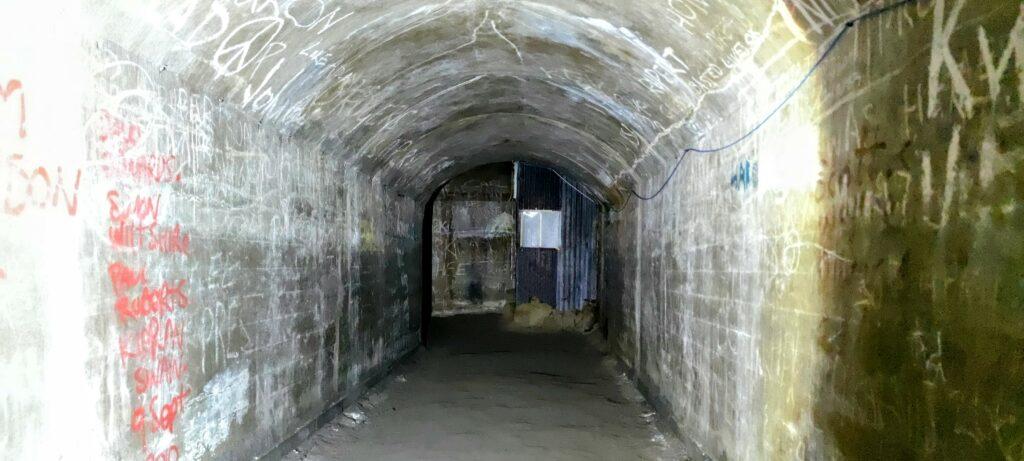Unexplored Kent: Ramsgate Tunnels
Underneath Kent’s seaside town of Ramsgate is the UK’s largest network of civilian wartime tunnels. These were reopened in 2014 as a tourist attraction and to tell the history of the town. Entrance to the Tunnels Tea shop as well as a selection of artefacts are free for visitors.
There are two tours offered in the Ramsgate tunnels- the Deep Tunnel Shelter explorer and the Tunnel Town explorer. We went on the Deep Tunnel tour which we booked online, a family tickets costs £22, an adult is £9 and children £6. It started with a short film before we donned our hard hats and embarked on an 1.5 hour long trip of the subterranean tunnels under Ramsgate. The tour is just under a mile in length and comprises of historical facts, anecdotes and photographs of the history of the tunnels. The tunnels are open throughout the year and tours are run at 10, 12 and 2. In the summer an extra one is held at 4pm.


Railway
Ramsgate’s first railway station was opened on 13th April 1846 – Ramsgate Town. This line connected London to Margate but was 1 mile from the town’s seafront. Therefore a second line was opened on 5th October 1863. This line descended to the seafront through a 1,124 yard tunnel. This made visiting the beach very convenient for day trippers from London however the tunnel was very steep. There was a constant risk of an out of control train running onto the beach which happened twice in 1891 and 1915.

In 1925 work to create a new railway line began. It opened in 1926 and cost £500,000 which is equivalent to £30 million today. With the new line open, the tunnel was sealed and abandoned for the first time. This led to a decrease in tourists to the town as more holidaymakers went to nearby Margate as the station was much closer to the seafront. A decade later work began to update and reopen the tunnel ready for the 1936 August bank holiday. The Ramsgate line was underground with illuminated displays showing scenes from all around the world and was dubbed the “World Scenic railway”.

WWII
By the late 1930s war between Britain and Germany seemed inevitable. Ramsgate’s location on the English Channel and North Sea made it a likely target for German bombings. In 1938, the town’s “top hat mayor”, Arthur Kempe alongside the borough engineer R.D. Brummell schemed for a network of tunnels to be created under the town. The first two designs were rejected but eventually it was agreed that 3.25 miles of semi-circular deep-level air raid shelter could be created under Ramsgate. They were opened by the Duke of Kent on 1st June 1939, 3 months before the outbreak of war.



The tunnels were designed to be able to shelter around 60,000 people and the population of the town was only 33,000. The tunnels were designed so that nobody was more than 4 minutes of brisk walking away from seeking shelter. Ramsgate tunnels were visited by Churchill during the war.


By 1940, over 300 families were living full time in the tunnels. During the worst assault of Ramsgate over 500 bombs were dropped on the town and 1,200 houses were destroyed. During the tour you can experience what it was like to be a “tunnel rat” and visit the replica living spaces. Blankets to separate the spaces gave the families a sense of privacy. Normal life continued as best they could for the tunnel’s inhabitants. Water and electricity were connected to the tunnels and a school, barber, doctors and postal service were all run from underground.

After the War
The tunnels were closed and left abandoned for 75 years after WWII. Ramsgate used the site as a dumping ground and you can still find some items left behind such as dodgem cars. The tunnels were not sealed which caused them to be a hangout for youths during the 1970s and 80s. Ramsgate eventually bricked up the entrance, presumably because the fire and police services were fed up of rescuing drunks from the subterranean playground.

Last Updated on 22 October 2024 by Michael


